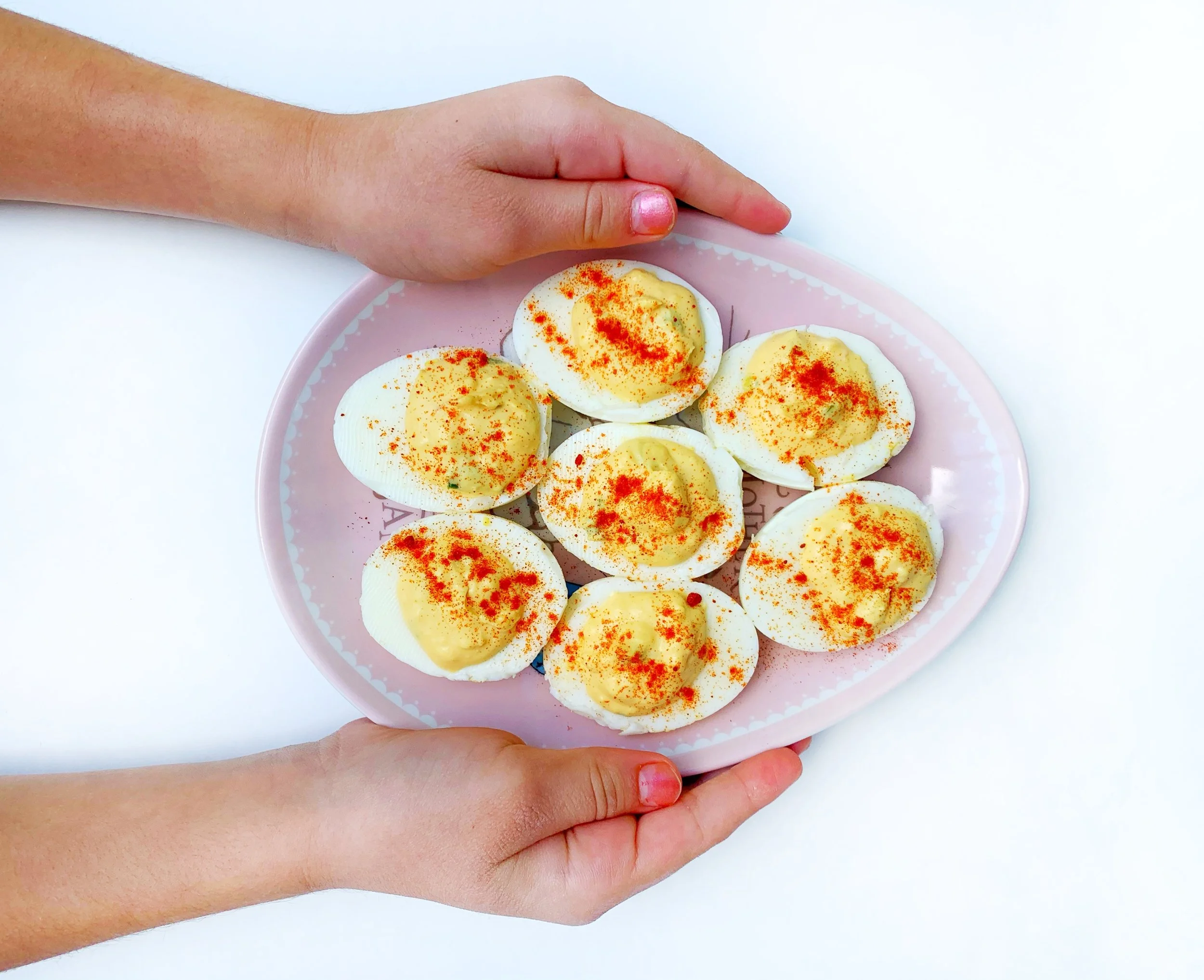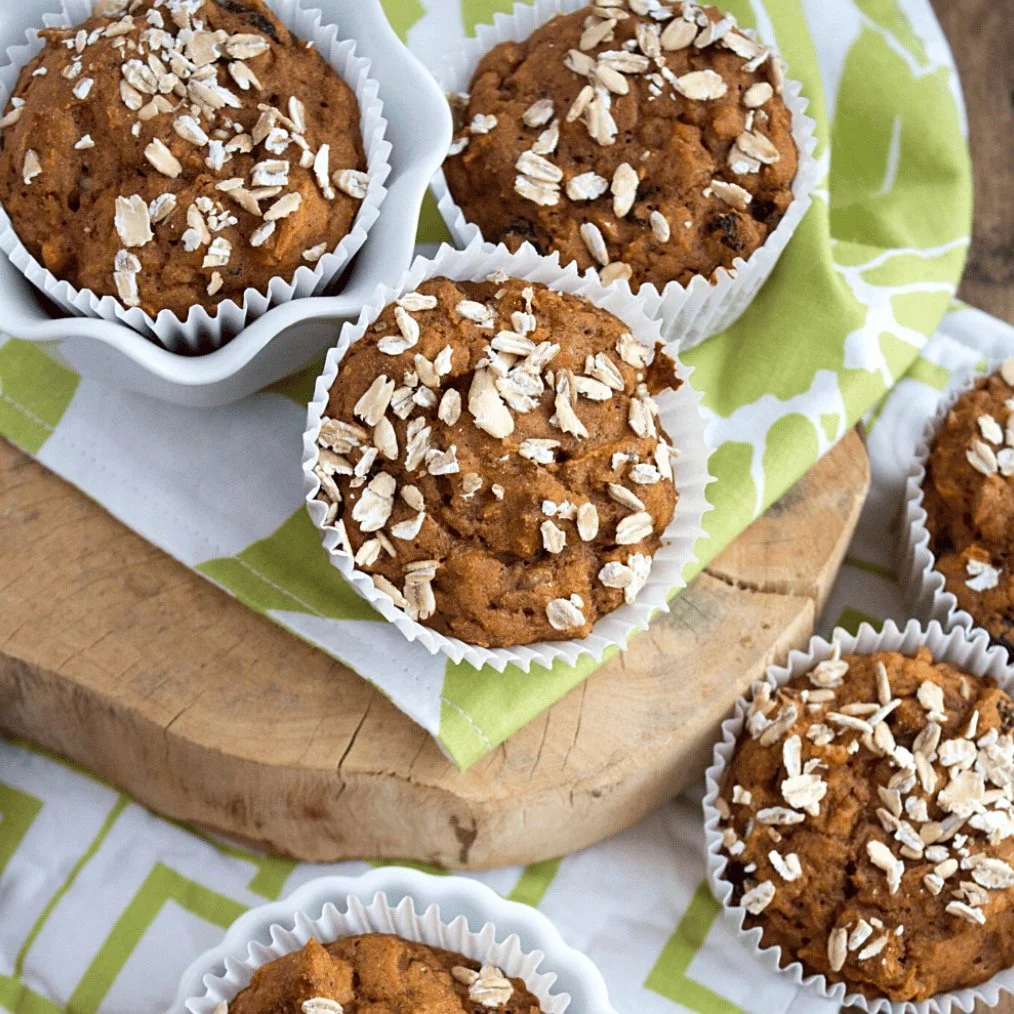Safe Easter Treats for Toddlers
This post may contain affiliate links. If you choose to purchase a product through a link, I will receive a small commission - this in no way impacts the amount you pay. Affiliate links are marked with an asterisk (*).
When my three girls were small, Easter baskets were a BIG DEAL. The big Easter basket hunt was always highly anticipated, and they would look forward to a visit from the Easter bunny and all of the delights they’d find while hunting for eggs.
If you celebrate Easter and you have kids, you might be in Easter basket-filling mode right around now too.
Figuring out safe Easter treats for toddlers can be particularly tricky, though. So many traditional Easter treats and sweets are choking hazards for kids during the toddler years and up until age 4. While all of those egg-shaped candies are pretty darn cute, small, hard, round foods like chocolate mini-eggs are dangerous for young children.
If you’re trying to figure out what to include in your child’s Easter basket and your child is under the age of 4, this post is for you!
Below, you’ll find a list of safe and easy Easter treats for toddlers, Easter candies to avoid for kids under 4, tips for a safer Easter, recipes for homemade Easter treats, and non-food Easter toys for toddlers that make excellent Easter basket stuffers from a pediatric dietitian and mom of three.
Easter Candies That Are Choking Hazards for Toddlers
Choking-hazard Easter candies for toddlers under the age of 4 include:
Hard round candies
Hard chocolate or candy eggs
Jelly beans
Gum
Sticky Easter candies like taffies and caramel
Gummy candies
Candies with whole nuts or globs of nut butter
Peeps (and any other marshmallows)
Any other Easter candies that are hard, round, and shaped like a windpipe
Choking episodes are rare. But it's important for anyone feeding an infant or toddler to be trained in infant CPR and first aid, just in case. My favorite option is from this nationally certified Red Cross and Lifesaving Society First Aid Instructor in her EXCELLENT, 2-hour, self-paced online course offered through Safe Beginnings* - for 20% off, use my code: MALINA.
Some top safety tips to help keep your toddlers safe this Easter include:
Always supervise toddlers when they are eating
Don’t allow toddlers to eat while on the move, which increases choking risk
Don’t allow games that require kids to compete by trying to stuff more food or candy into their mouths
What Easter Candies Can an 18-Month-Old Eat?
If you have a baby under the age of 2, keep in mind that one of the key takeaways from the 2020-2025 Dietary Guidelines for Americans is that foods with added sugars are not recommended for kids younger than 2 years old.
That being said, foods with added sugars are an enjoyable part of our culture, traditions, and celebrations, especially on holidays like Easter. Is it the end of the world if babies and toddlers under 2 have a little added sugar here and there? No!
But as a general rule, it’s best to avoid offering sugary foods as best you can during this stage of life. See below for some options that can help make Easter special for your little one while also keeping added sugars low.
What Easter Candies Can a 2-Year-Old Eat?
Hollow chocolate bunnies and larger chocolate eggs that can be broken into smaller pieces are safer Easter candy options for toddlers under the age of 4. Wafer-like cookie candies like Kit-Kats are another lower-risk, easy-to-chew treat option.
From a choking hazard perspective, it’s safer to skip the jelly beans and mini-eggs and instead, fill plastic Easter eggs for toddlers with low-risk options, like soft dried fruit, yogurt melts, cereal, puffs, and animal crackers.
Here are some of my favorites:
Non-Food Easter Toys for Toddler Easter Baskets
If you’re looking for some toddler-friendly, fun Easter basket stuffers that are not food, here are some ideas your kids will love:
Homemade Easter Treats for Toddlers
Looking for some ideas for homemade Easter treats your toddlers will love? Below are some ideas from my own recipe collection, as well as some of my favorite fellow registered dietitians.
Did you know that out of all the foods in the American diet, eggs are the most concentrated food source of choline, an essential nutrient for brain health and muscle control as well as mood and memory regulation? These Dijon Deviled Eggs offer a tasty way to meet your daily dose of choline! Recipe from my own recipe collection.
No bake carrot cake bites are a healthy snack that kids can help make! Made with oats, peanut butter, coconut oil and sweetened with dates, these vegan bites are great for all ages. Photo and recipe by registered dietitian, Sarah Schlichter of Bucket List Tummy.
These healthy carrot cake muffins are whole wheat, low in sugar, and delicious. Toddlers will love making them with you as much as they will love eating them! Photo and recipe by registered dietitian, Anne Mauney of Fannetastic Food.
These healthy carrot cake bars are made with oats, peanut butter, and shredded carrots. They make a delicious snack for kids! Photo and recipe by registered dietitian, Sarah Schlichter of Bucket List Tummy.
These no bake chocolate orange bliss balls are super quick and fun for kids to make. Perfect for a snack. Photo and recipe created by Penelope Henderson of Nutrition 2 Nourish & Flourish.
These mini Easter egg fruit pizzas are adorable and make the perfect dessert. The sugar cookie base is naturally sweetened with maple syrup and cut into the shape of an Easter egg. The cookie is then topped with a cream cheese frosting and colorful fresh fruit. Photo and recipe by registered dietitian, Elysia from Haute and Healthy Living.
When they were small, one of the Easter activities my girls always looked forward to the most was decorating Easter eggs. If you prefer to use an all-natural food dye, Watkins makes a great set of effective, all-natural food dyes* that are free from artificial colors and derived from pure vegetable juice, turmeric, and spirulina extract.
Lastly, here’s a post on how to make the perfect hard-boiled egg!
I’m a big fan of eggs when it comes to child nutrition, as well as Easter activities. A report published by the advisory committee to the Dietary Guidelines for Americans (a top group of nationally recognized scientists) highly recommends eggs for babies and toddlers, as they are an excellent source of 8 essential nutrients. These include lutein and choline, which are critical for supporting a child’s brain growth and development. Eggs also contain vitamins A, D, E, K, and a range of B vitamins. When serving, be sure to offer both the egg white and yolk; egg yolks are where most of the nutrients in eggs are located.
Have a safe and blessed Easter…
Xo Malina

















